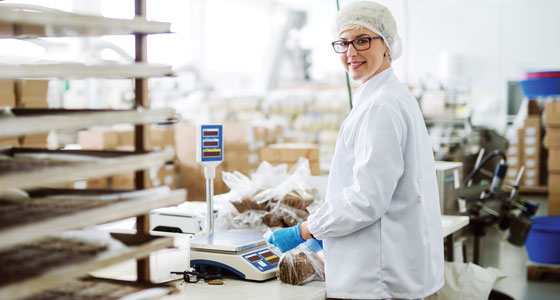Global Research Partners in Food Packaging Innovation
PACKAGING

Global food-packaging institutes and partners can help improve food packaging. While the business case for using outside research partners is often primarily financial, collaboration with institutes widens the value chain, builds tactical knowledge, and clears a path for innovation. In-depth, focused expertise at institutes can be leveraged when the working relationship is defined.
Global Research Partners
Working with external food-packaging research partners satisfies food and packaging companies’ need for benefits including specific expertise within a particular region of the world, cost reduction, and the desire to identify and plan for a particular innovation. A full-time employee with just one area of expertise at a food or packaging company has to be balanced against other priorities if that one area of expertise is not needed in full-time capacity. Alternatively, using research partners with specific knowledge lowers overall costs. For example, approval for the use of nanomaterials in packaging requires specific federal and international migration protocols that involve expertise in the determination of appropriate food simulating liquids and test conditions and other parameters. If a food or packaging company works with a research institute to identify and subsequently conduct the testing required for approval, the need to purchase, maintain, and operate special equipment is absent.
Research partners widen the value chain and facilitate the exchange of new ideas that fuel innovation by identifying areas where a food or packaging company may need to build expertise. For example, when innovations in flexography were advancing rapidly, packaging companies needed to keep pace with enhanced print quality; research partners helped them to stay current. Many modern digital printing innovations are the result of research partnerships that were developed over many years. Expertise at research centers can also be used to arrive at solutions rapidly. When rapid solutions are needed, the business case for outside expertise is often a matter of food safety as well. For example, when packaging was needed for a new preservative-free cookie with a water activity above 0.95 and a pH above 4.6, the expertise of a food packaging research center addressed food safety issues, using appropriate packaging. The expertise of research partners often leads to an array of solutions. These solutions are ranked by feasibility and prioritized for research and development, using expertise at the centers. Interestingly, this creative process of determining solutions often fuels further innovation at food and beverage companies. Moreover, the global nature of many food and packaging companies warrants expertise within many countries. This exchange of ideas between different scientists and food and packaging leaders is needed.
Advancing Innovation
Packaging research centers are focusing on extending shelf life with packaging, using more-sustainable materials, reducing food waste, assessing the effect of food processing on food packaging, and preventing the migration of packaging materials into food. For example, Kasetsart University in Bangkok is using curcumin-methylcellulose to detect spoilage of sea bass; this will allow retailers and consumers to determine whether the sea bass is safe for consumption. This technology is based on the ability to detect a change in pH via a color change from yellow to brown. At Hasselt University’s Packaging Technology Center in Belgium, the development of inkjet printable and stretchable conductor components on packaging is underway. This research group is also exploring the oxygen barrier properties of polyethylene terephthalate with an ultrasonic spray coating of zinc oxide nanoparticles. The Food Packaging Laboratory and Department of Science and Food Technology at Universidad de Santiago de Chile and other institutes are also working on packaging solutions involving nanoparticles.
Research in the following areas is also occurring at packaging research centers around the world: distribution testing, shelf-life testing and predictive modeling, applied research in intelligent and active packaging, package design, and material science and the development of better barriers. In some cases, research centers will focus on one area or a few areas of expertise within the packaging industry. For example, the Department of Packaging Engineering at Jiangnan University in China is studying diffusion modeling and recently assessed the applicability of the classic Brandsch diffusion model to biopolymers. The Fraunhofer IVV in Germany is investigating cutting-edge polymer innovation and migration studies. The Institute of Food Technology, Packaging Technology Center, in Brazil has considerable expertise in glass. Nofima in Norway has package sustainability researchers exploring the impact of using recyclates and recyclable packaging for product contact. Interesting research is also taking place at the University of Twente in the Netherlands. “Our research focuses on design methods: how decisions are made on the packaging concepts and materials, how uncertain and incomplete information influences these choices, how to cooperate with the many stakeholders involved in the decision processes, how the influence of appearance can be used during design stages, and how sustainability has to be taken up in design trajectories,” says Roland ten Klooster, chair of packaging design and management shares at University of Twente. “Networks like [the International Association of Packaging Research Institutes] shed light on [the] complexities of biodegradable packaging with high carbon footprints and unproven biodegradability in delivering less sustainable packaging.”
 Building Relationships
Building Relationships
Leveraging a working relationship with research partners requires an understanding of the potential shared benefit and the ability to define intellectual property. Although expertise at food packaging research institutes is of importance to food and packaging companies, working with external entities requires a decision to restrict the engagement to testing or to expand the value chain to build a long-lasting relationship. When research centers are used solely to obtain testing, the association is functional yet very limited. When the connection is expanded to address critical challenges the company faces, more value can be achieved. This value is best expressed by the widening of the packaging value chain so that institutes address challenges in an ad-hoc and fluid manner. This requires relationship building. For example, a startup food company with no packaging expertise required testing on a product to determine the product’s shelf life. By asking food packaging institutes to review and select experiments, the company realized that a more committed relationship would provide the added value of not only knowing the shelf life but also increasing the shelf life and would enable development on sustainable packaging that was becoming more relevant to consumers. As the relationship progressed, innovations in product, process, and packaging continue to allow the company to mature.
Mutual disclosure agreements (MDAs) are a necessity, yet they can be cumbersome. Increasingly, research centers wish to retain or share intellectual property created while working on research projects for food or packaging companies. MDAs may also need to be redefined as new issues emerge. It may be helpful to list what specific expertise is being sought for the project, who is bringing the skill, and what intellectual property will be retained by the company or by the research center. This clarifies what intellectual property is prior knowledge, who owns this knowledge, and what intellectual property will be jointly or separately held in the research process. For example, for the collaboration in the development of an edible barrier to retard moisture migration for a nutrition bar, the food company already had expertise in moisture migration whereas the research center had the expertise for proper film formation to inhibit moisture loss. The innovation that combined the two areas was developed, and the resulting intellectual property was jointly held. Subsequent refinement of the technology to align with production requirements at the nutrition bar company was kept as a trade secret.
Acknowledgement
Javiera Rubilar, additive development scientist, Penn Color Inc., compiled the data for this article.


